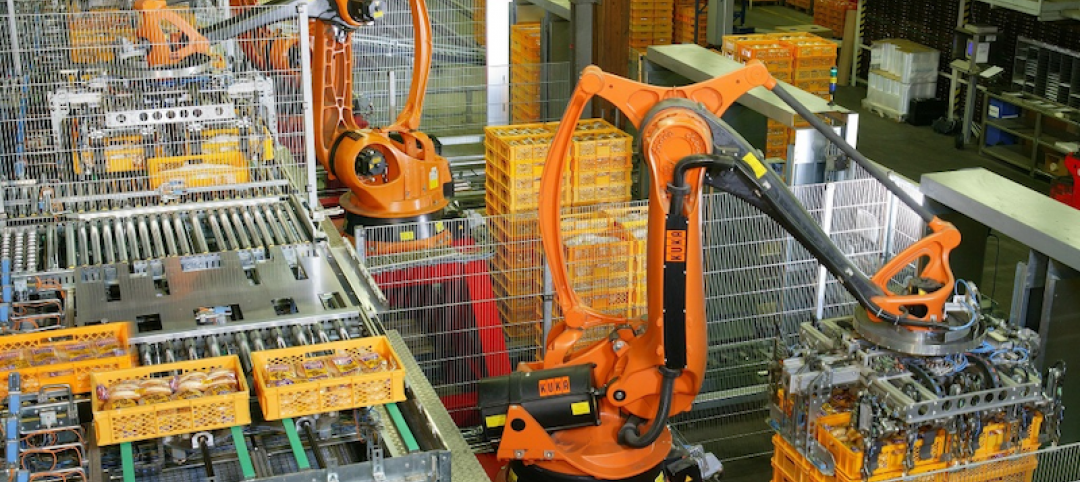Welcome to HMC Architects’ Five in Focus blog series, where we explore the latest trends, ideas, and innovations shaping the future of architecture and design. This series asks our design professionals to tell us what’s capturing their attention and offer some insights.
Sergio Lechuga, CID, is HMC’s Director of Interior Design. He shares his thoughts on inclusive and equitable healthcare design, technology and AI in healthcare, resilient design, carbon neutrality, and academic learning in pediatric acute care environments.
1. Inclusive and Equitable Design in Healthcare Environments
Design plays a key role in making people feel welcome and safe. In healthcare environments, where the well-being of patients is the priority, it’s becoming a much more obvious place to embrace inclusive design principles. Like physicians upholding the Hippocratic oath, we must accommodate diverse backgrounds and bridge healthcare access disparities by providing affordable and accessible environments for all, regardless of socio-economic status. Considering affordability, transportation, and proximity to underserved communities, healthcare spaces must be conveniently accessible to everyone. Our commitment to inclusive design must go beyond physical accessibility.
Recognizing diverse populations’ unique needs, we must create culturally sensitive healthcare environments. Incorporating diversity, inclusivity, and cultural competency in the design process, these healing spaces reflect and respect our communities’ identities, languages, and customs. Designers must engage community stakeholders, patients, and healthcare professionals to gather input and incorporate diverse perspectives. By involving users’ voices, we can create environments that meet specific needs and empower active participation in healthcare journeys.
2. Tech and Artificial Intelligence in Healthcare
The rapid advancement of technology is revolutionizing the healthcare industry, and its impact on the future of business cannot be underestimated. As healthcare designers, we must comprehend how providers embrace new technologies and adapt spaces accordingly. Consumer wearables, Artificial Intelligence (AI), and augmented reality transform how healthcare providers deliver care, ultimately shaping how we think and use physical space. While the human need for tangible reality remains, these technologies have a fascinating potential to improve and enhance the healthcare experience by transporting individuals to virtual spaces that offer a more calming and therapeutic environment. AI and related technologies can positively influence patient outcomes more efficiently and effectively, making healthcare more accessible for underserved communities. As we continue exploring these advancements, we can unlock new possibilities in creating healthcare environments that cater to physical and emotional healing, amplifying the potential for improved outcomes and patient satisfaction.
3. Resilient Design
Traditionally, architects have looked to the past when planning for the future. Today, we must prepare for the unexpected and unpredictable to ensure our clients are prepared to serve their communities in their day-to-day needs and times of crisis. As we experience more extreme weather conditions, we must also consider how our project designs must evolve to withstand the impacts of higher and lower temperatures, higher wind speeds, and the potential for flooding, fire, or hazardous air quality. In the face of increasing costs and the dynamic nature of healthcare, hospitals must prioritize efficiency and functionality in their design. Healthcare facilities should be resilient, adaptable, and capable of responding to unpredictable situations such as changing climate conditions, global pandemics, and evolving technology advancements in patient care. By incorporating durable, maintainable, flexible, and adaptable materials and spaces into our projects, they can more easily adapt to meet changing and unexpected needs.
This may involve updating standard materials, implementing demountable partitions, more advanced and redundant Mechanical, Electrical, and Plumbing (MEP) systems, or programming space to accommodate fluctuations in department requirements. By providing adaptable environments that can be converted with minimal downtime and construction costs, we can better serve our clients and ensure their ability to navigate the challenges and uncertainties of the healthcare landscape. Resilient design enhances the efficiency and functionality of healthcare spaces and supports delivering high-quality patient care in a rapidly evolving environment.
4. Carbon Neutrality
In pursuing resilient design, it is essential to consider the impact of healthcare facilities on climate change and strive towards reducing carbon emissions. The building industry is responsible for nearly 40% of all greenhouse gas emissions, and the healthcare industry is a significant contributor. The standard of care in healthcare environments also makes it one of the most challenging when considering carbon reduction strategies. As we push towards all-electric buildings, onsite renewable energy, and onsite battery storage or microgrids, healthcare clients must consider the operational impacts these changes can have. As designers, we look at the whole carbon picture, considering ways to reduce operational and embodied carbon. We aim to create healthcare environments that meet stringent standards while prioritizing sustainability and environmental responsibility. In addition to high-efficiency building performance, this involves selecting high-performing products that are less harmful, economically viable, durable, and capable of reducing CO2 emissions. Achieving carbon neutrality or even carbon-negative design requires a commitment from our clients, and we are dedicated to educating and encouraging them to adopt more sustainable and resilient practices. By integrating efficient building designs, selecting eco-friendly materials, and promoting sustainable choices, we can contribute to an environmentally conscious healthcare industry, reducing its carbon footprint and supporting a healthier planet for future generations.
5. Academic Learning in Pediatric Acute Care Environments
A study by the University of New South Wales revealed that children with chronic illnesses are three times more likely to experience academic setbacks. Understanding the importance of addressing the needs of the “whole child” and drawing upon our expertise in both the PreK-12 and healthcare sectors, we aspire to develop pediatric acute care environments that prioritize health and well-being and foster academic learning. By integrating educational and instructional features and spaces within these care settings, we have the potential to assist our clients in attracting new patients and better serving their existing ones, particularly for institutions that already have successful programs like the Children’s Hospital of Los Angeles (CHLA). Our unique blend of expertise in designing education and healthcare spaces and an unwavering dedication to ensuring children receive the essential support sets HMC apart in pediatric healthcare design.
Have a question for Sergio? Contact him at sergio.lechuga@hmcarchitects.com
More from Author
HMC Architects | May 30, 2024
Inclusive design strategies to transform learning spaces
Students with disabilities and those experiencing mental health and behavioral conditions represent a group of the most vulnerable students at risk for failing to connect educationally and socially. Educators and school districts are struggling to accommodate all of these nuanced and, at times, overlapping conditions.
HMC Architects | Apr 29, 2024
Tomorrow's classrooms: Designing schools for the digital age
In a world where technology’s rapid pace has reshaped how we live, work, and communicate, it should be no surprise that it’s also changing the PreK-12 education landscape.
HMC Architects | Mar 26, 2024
Safeguarding our schools: Strategies to protect students and keep campuses safe
HMC Architects' PreK-12 Principal in Charge, Sherry Sajadpour, shares insights from school security experts and advisors on PreK-12 design strategies.
HMC Architects | Jul 26, 2023
10 ways public aquatic centers and recreation centers benefit community health
A new report from HMC Architects explores the critical role aquatic centers and recreation centers play in society and how they can make a lasting, positive impact on the people they serve.
HMC Architects | Jun 26, 2023
Addition by subtraction: The value of open space on higher education campuses
Creating a meaningful academic and student life experience on university and college campuses does not always mean adding a new building. A new or resurrected campus quad, recreational fields, gardens, and other greenspaces can tie a campus together, writes Sean Rosebrugh, AIA, LEED AP, HMC Architects' Higher Education Practice Leader.
HMC Architects | Apr 13, 2023
Creating a sense of place with multipurpose K-12 school buildings
Multipurpose buildings serve multiple program and functional requirements. The issue with many of these spaces is that they tend not to do any one thing well.
HMC Architects | Jun 2, 2022
Women in Architecture: How HMC Pioneers Gender Equality
A survey by the Association of Collegiate Schools of Architecture (ACSA) shows that while women account for nearly half of graduates from architecture programs, they only make up about 15 percent of licensed architects.
HMC Architects | Jan 20, 2020
Robotics in architecture and construction: An industry shift
Architects who embrace this intriguing and dynamic technology now will be better equipped to design the most efficient buildings of the future.
HMC Architects | Jul 30, 2019
What is the future of architecture as a profession?
With the rapid evolution of available technologies, and the integration of them into the profession, the role of an architect is changing faster than it ever has before.
















